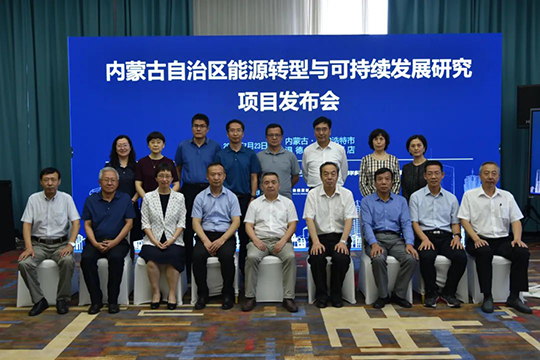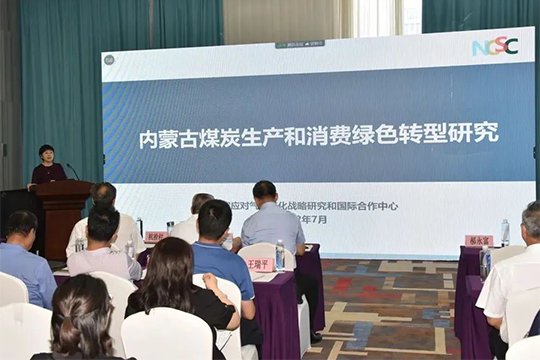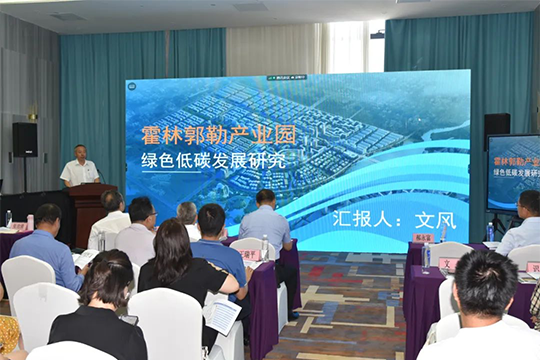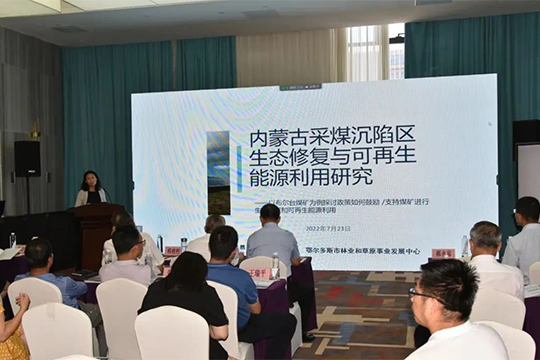内蒙古是我国重要的能源和战略资源基地,能源结构以煤为主。煤炭生产和消费的过快增长导致内蒙古未能完成“十三五”能源消费总量控制指标,碳强度不降反升。因此,内蒙古煤炭产业面临着艰巨繁重的任务,需在保障能源安全的同时完成绿色低碳转型。
 与会代表在会场合影 @NRDC
与会代表在会场合影 @NRDC
2022年7月23日,NRDC、国家应对气候变化战略研究和国际合作中心、鄂尔多斯市林业和草原事业发展中心、内蒙古北方城乡发展研究院在呼和浩特举行发布会,联合发布煤控研究项目四份报告。其中三份报告从煤炭产业发展、减污降碳、采煤沉陷区生态修复与可再生能源发展三个方面提出了推动内蒙古能源转型和有效降低碳排放的路径与对策。第四份报告以霍林郭勒产业园为案例,剖析了当地铝产业在低碳转型中的挑战与机遇,提出了有针对性的政策建议。
 《内蒙古煤炭生产和消费绿色转型研究》报告发布 @NRDC
《内蒙古煤炭生产和消费绿色转型研究》报告发布 @NRDC
《内蒙古煤炭生产和消费绿色转型研究》报告分析了内蒙古煤炭产业生产规模、煤炭外输需求及主要耗煤产业的消费需求。报告认为,2035年前内蒙古煤炭产量将保持相对稳定,但在关键转换期需要预留一定的弹性产能以增强能源供给安全。煤炭消费在近期仍将继续上升,预计到“十六五”时期趋于稳定。
火电、化工、钢铁行业是内蒙古重点耗煤行业,且减煤潜力较大。报告建议严控高耗能产业产能,加快建立区域绿色转型合作机制,加强不同地区不同城市的能源互通互补以及产业间合作。
重工业在内蒙古经济发展中占主体地位,也是煤炭消费主力。呼和浩特、包头和乌海是内蒙古重工业较为发达的典型城市,其中,呼和浩特煤炭消费以电力行业为主,包头以钢铁、有色、电力行业为主,乌海以煤化工为主。
 《内蒙古典型城市煤炭消费与大气质量的 关联分析及政策建议》报告发布 @NRDC
《内蒙古典型城市煤炭消费与大气质量的 关联分析及政策建议》报告发布 @NRDC
《内蒙古典型城市煤炭消费与大气质量的关联分析及政策建议》报告分析了上述三个城市煤炭消费总量控制措施与大气质量提升的关系。报告提出,在减污降碳协同增效方面,加强工业煤耗管控、提高工业污染减排对于提升大气质量效果最为显著。虽然电力行业的减排潜力已随着超低排放技术的广泛应用逐渐降低,但钢铁、水泥、焦化等其他工业企业领域若积极推进超低排放技术,也将显著改善地区大气污染。
霍林郭勒产业园以煤电-电解铝为核心,且在内蒙古工业园区中具有较强的代表性。推动霍林郭勒产业园绿色低碳转型,有利于在内蒙古推广好的经验和做法。
 《霍林郭勒产业园绿色低碳发展研究》报告发布 @NRDC
《霍林郭勒产业园绿色低碳发展研究》报告发布 @NRDC
《霍林郭勒产业园绿色低碳发展研究》报告认为,该产业园产业链条短、产品附加值低,致使单位GDP能耗强度水平明显较高;清洁能源的替代水平较低,单位产品碳排放强度高。报告建议,产业园应加快产业升级,调整供能结构,实施绿能替代,同时推进电解铝企业绿色转型和固废综合利用,提高能源使用效率,推动能耗强度大幅度下降。
 《内蒙古采煤沉陷区生态修复与可再生能源 利用研究》报告发布 @NRDC
《内蒙古采煤沉陷区生态修复与可再生能源 利用研究》报告发布 @NRDC
《内蒙古采煤沉陷区生态修复与可再生能源利用研究》报告以鄂尔多斯市布尔台煤矿为例,总结了其生态治理新模式——利用采煤沉陷区发展“生态 + 光伏”,将生态修复、可再生能源利用与社区惠益共享等相融合。
在分析基础上,报告对比美、德、英等国经验,建议激励矿区生态修复的同时将废弃矿区及采煤沉陷区闲置土地变废为宝,为国家可再生能源开发利用及北方生态屏障构建提供空间。进一步强化矿区生态修复监管,完善矿区用于可再生能源开发的土地利用政策,推动可再生能源项目反哺矿区生态治理,推动清洁能源周边及外送消纳。

